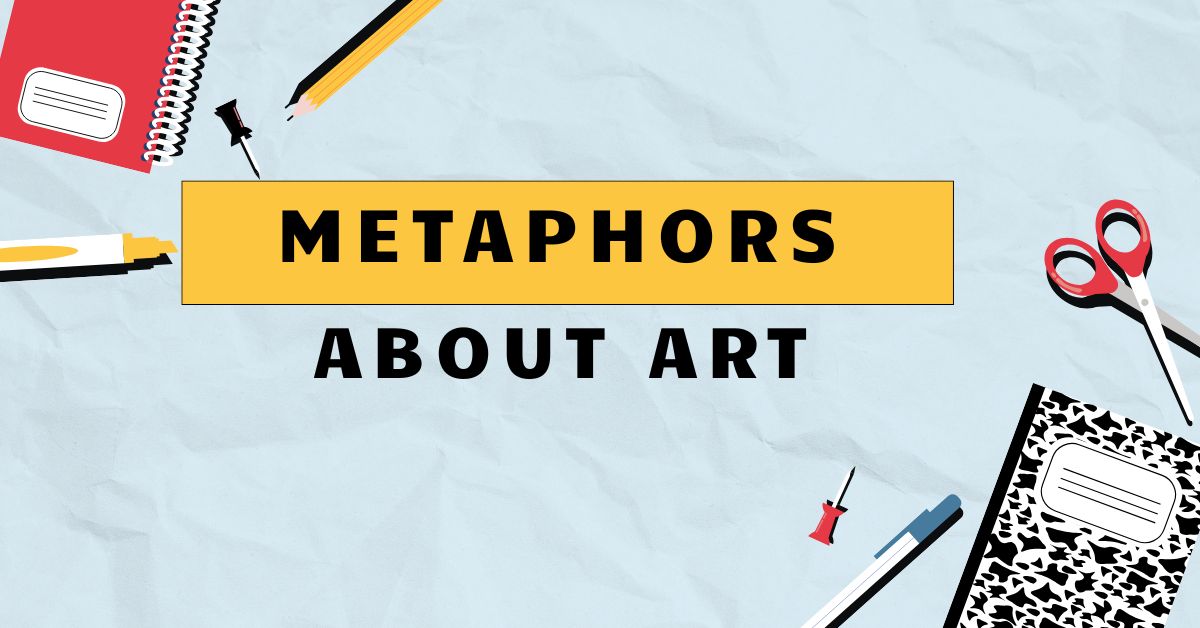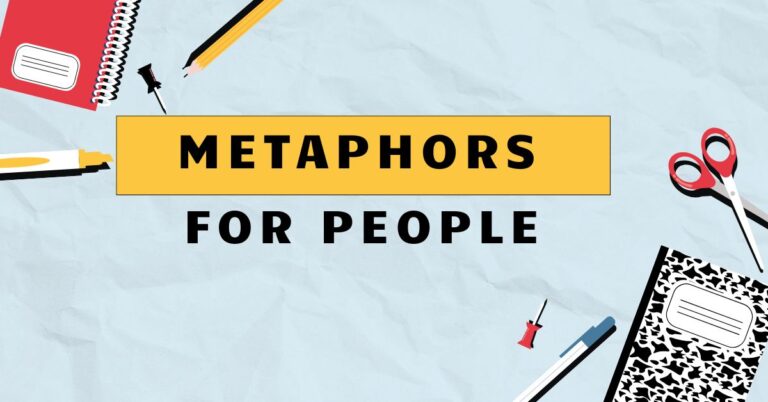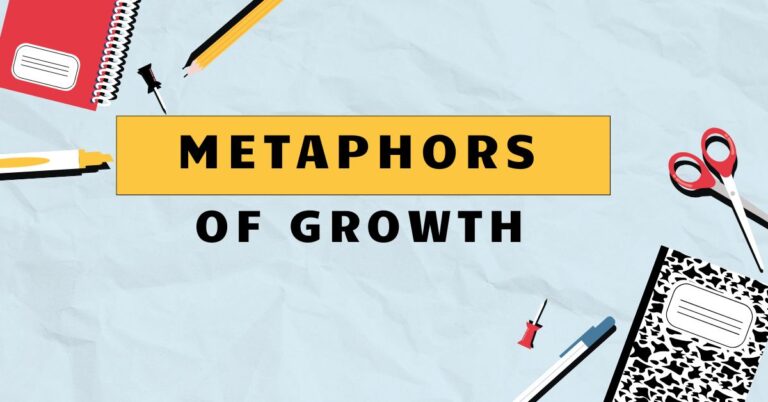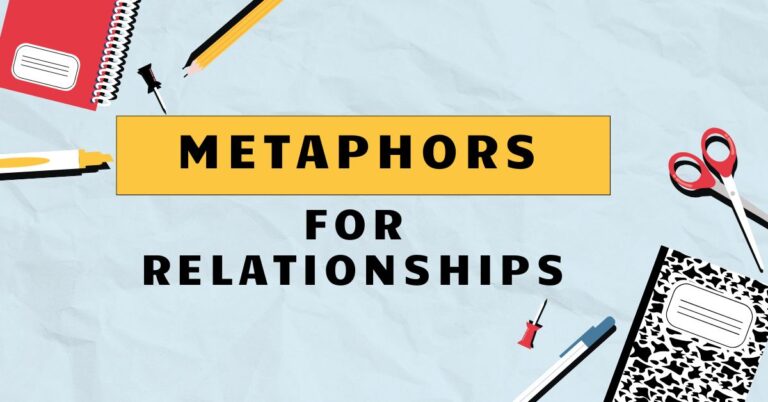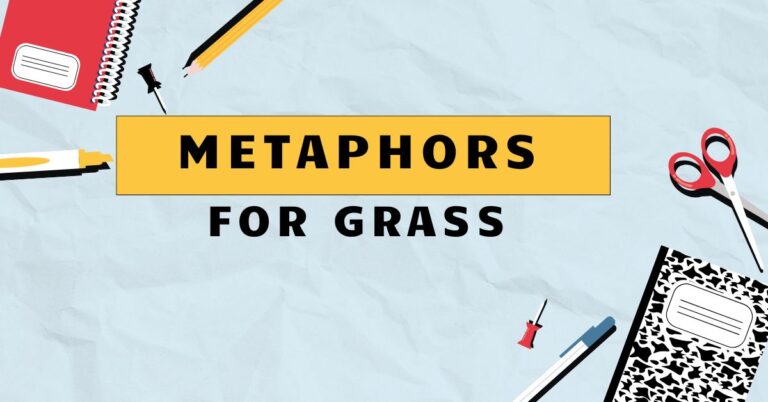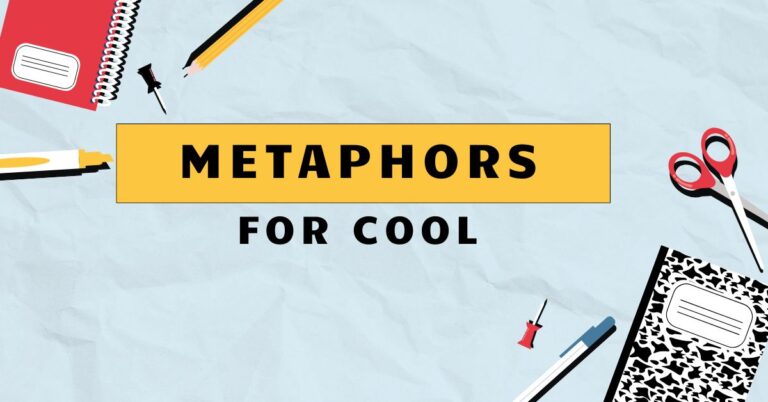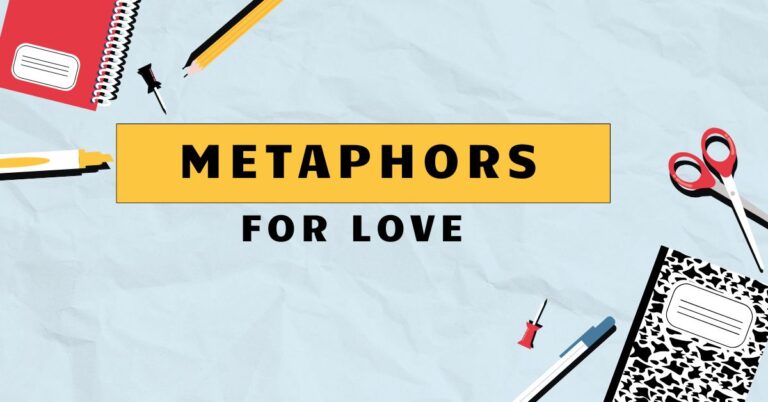42 Metaphors About Art: Understanding Figurative Language
Metaphors are a cornerstone of figurative language, enriching our communication by drawing comparisons between seemingly unrelated things. When applied to art, metaphors provide a powerful lens through which we can interpret, analyze, and appreciate creative expression.
Understanding these metaphors is crucial for anyone interested in art criticism, art history, or simply enhancing their appreciation of artistic works. This article will explore the various types of metaphors used in art, their structural elements, and how to effectively utilize them.
This guide benefits art students, educators, critics, and enthusiasts alike, offering a comprehensive exploration of this fascinating linguistic device.
Table of Contents
- Introduction
- Definition of Metaphor
- Structural Breakdown of Art Metaphors
- Types and Categories of Art Metaphors
- Examples of Metaphors About Art
- Usage Rules for Art Metaphors
- Common Mistakes When Using Art Metaphors
- Practice Exercises
- Advanced Topics in Art Metaphors
- Frequently Asked Questions
- Conclusion
Definition of Metaphor
A metaphor is a figure of speech that directly compares two unlike things without using “like” or “as.” It asserts that one thing *is* another, creating an implicit comparison that highlights shared qualities or characteristics. In the context of art, metaphors are used to describe, interpret, and analyze artworks by drawing parallels between the artwork and something else, often something abstract or emotional.
Metaphors function by transferring qualities from one concept (the source domain) to another (the target domain). For instance, describing a painting as “a window to another world” uses the source domain of a ‘window’ to convey the target domain’s (the painting) ability to transport the viewer to a different reality.
The effectiveness of a metaphor relies on the audience’s ability to recognize the connection and understand the intended meaning.
The context in which a metaphor is used is crucial. The same metaphor can have different interpretations depending on the artwork, the artist’s intent, and the audience’s background.
For example, the metaphor “a symphony of colors” might describe a vibrant, harmonious painting, but it could also, in a different context, describe a chaotic and discordant artwork where colors clash intensely. Therefore, understanding both the literal and figurative meaning is essential to interpreting art metaphors effectively.
Structural Breakdown of Art Metaphors
Art metaphors, like all metaphors, consist of two primary elements: thetenorand thevehicle. The tenor is the subject to which metaphorical attributes are ascribed, which is usually the artwork itself.
The vehicle is the entity whose attributes are borrowed to describe the tenor.
Consider the metaphor: “This sculpture is a frozen dance.” Here, the tenor is the sculpture, and the vehicle is the frozen dance. The metaphor works by suggesting that the sculpture possesses qualities associated with dance, such as movement, rhythm, and grace, even though it is a static object.
The relationship between the tenor and the vehicle is not always straightforward. Effective metaphors often rely on implicit associations and shared cultural knowledge.
The strength of a metaphor lies in its ability to create a vivid and insightful connection between the artwork and the audience. By understanding the structural components of art metaphors, we can better appreciate their complexity and interpret their intended meanings.
Furthermore, the context of a metaphor can significantly alter its interpretation. A metaphor used in a formal art critique might be interpreted differently than the same metaphor used in a casual conversation.
The surrounding text, the speaker’s tone, and the overall purpose of the communication all contribute to the meaning of the metaphor.
Types and Categories of Art Metaphors
Art metaphors can be categorized based on the aspects of art they describe. Here are some common categories:
Metaphors Describing the Artistic Process
These metaphors focus on the creation of the artwork, highlighting the artist’s techniques, struggles, and inspirations. They often use verbs and nouns that evoke a sense of action and transformation.
Metaphors Describing Emotional Impact
These metaphors aim to capture the feelings and emotions that the artwork evokes in the viewer. They often use language related to emotions, sensations, and personal experiences.
Metaphors Describing Social Commentary
These metaphors interpret the artwork as a reflection or critique of social, political, or cultural issues. They often use language that relates to societal structures, power dynamics, and historical events.
Metaphors Describing Aesthetic Qualities
These metaphors focus on the visual or sensory aspects of the artwork, such as color, texture, form, and composition. They often use language borrowed from other sensory experiences, like music or taste.
Metaphors Describing Historical Context
These metaphors place the artwork within a specific historical period or movement, drawing parallels between the artwork and the events, ideas, and cultural trends of that time.
Examples of Metaphors About Art
Below are several tables with examples of metaphors categorized by the aspect of art they describe. Each table contains numerous examples to illustrate the variety and richness of metaphorical language used in art criticism and appreciation.
The following table illustrates metaphors that focus on describing the artistic process:
| Metaphor | Explanation |
|---|---|
| The artist sculpted his vision from raw emotion. | Suggests the artist’s emotion was the starting point and material for the art. |
| Her brushstrokes were whispers on the canvas. | Implies delicate and subtle application of paint. |
| The painting is a symphony of colors, carefully orchestrated. | Compares the arrangement of colors to the composition of a musical piece. |
| He chiseled away at the stone, revealing the figure within. | Emphasizes the process of uncovering the artwork from a larger mass. |
| The canvas became a battlefield for his inner turmoil. | Portrays the act of painting as a struggle to express internal conflict. |
| She molded the clay with gentle persuasion. | Suggests a delicate and collaborative relationship between the artist and the medium. |
| His art is a tapestry woven with threads of memory and experience. | Connects the creation of art to the weaving together of personal history. |
| The artist poured his soul onto the canvas. | Indicates a deep emotional investment and personal expression in the artwork. |
| Each stroke was a step in a carefully choreographed dance. | Compares the artist’s movements to the precision and rhythm of dance. |
| The sculpture emerged from the marble like a phoenix from ashes. | Suggests a transformative and powerful emergence of the artwork. |
| His photographs capture fleeting moments, freezing time itself. | Implies the ability of photography to preserve ephemeral moments. |
| The digital artist painted with light, creating ethereal landscapes. | Uses the concept of painting to describe digital art, emphasizing the use of light. |
| The mural is a story etched onto the city’s skin. | Compares the mural to a narrative permanently marked on the urban environment. |
| The installation is a conversation between materials. | Suggests an interaction and dialogue among the different components of the artwork. |
| His drawings are blueprints of his imagination. | Compares the drawings to architectural plans, representing the artist’s creative ideas. |
| The collage is a mosaic of fragmented realities. | Indicates the piecing together of different elements to create a composite image. |
| The performance art was a ritual of self-discovery. | Connects the performance to a symbolic and transformative process. |
| The artist sculpted silence into the form. | Implies the ability to capture and represent the absence of sound. |
| The artist’s hands are the instruments of their vision. | Emphasizes the role of the artist’s skill and dexterity in creation. |
| The artwork is a diary of the artist’s journey. | Suggests the artwork is a personal record of the artist’s experiences and thoughts. |
| The artist’s spirit is the kiln that baked the clay to perfection. | Connects the artist’s passion and dedication to the process of refining their art. |
| Each brushstroke is a punctuation mark in the artist’s visual narrative. | Compares the application of paint to the way punctuation shapes written language. |
| The artist’s studio is the laboratory where ideas are alchemized into art. | Suggests that the artist’s workspace is a place of transformative creativity. |
| The sculptor wrestled with the stone until it yielded its secrets. | Portrays the artist’s interaction with the material as a physical and intellectual struggle. |
The following table provides metaphors that are used to describe the emotional impact of art:
| Metaphor | Explanation |
|---|---|
| The painting is a soothing balm for the soul. | Suggests the artwork provides comfort and healing. |
| The sculpture exudes a quiet strength. | Implies the artwork possesses an understated but powerful presence. |
| The music is a torrent of emotion, sweeping the listener away. | Compares the music to a powerful and overwhelming emotional experience. |
| The artwork is a mirror reflecting the viewer’s own anxieties. | Suggests the artwork provokes introspection and self-reflection. |
| The play is a punch to the gut, leaving the audience breathless. | Portrays the performance as a shocking and impactful experience. |
| The poem is a delicate dance of joy and sorrow. | Connects the poem to a balanced and nuanced emotional expression. |
| The film is a rollercoaster of emotions, with highs and lows. | Compares the viewing experience to a series of intense emotional shifts. |
| The photograph captures a moment of pure bliss. | Indicates the ability of the photograph to preserve and convey happiness. |
| The novel is a window into the human heart. | Suggests the novel provides insight into human emotions and motivations. |
| The performance art is a cathartic release of pent-up frustration. | Connects the performance to a cleansing and transformative emotional experience. |
| The painting is a haunting melody that lingers in the mind. | Implies the artwork has a memorable and evocative quality. |
| The sculpture radiates an aura of peace and tranquility. | Suggests the artwork emanates a calming and serene atmosphere. |
| The music is a lullaby that soothes the weary soul. | Compares the music to a comforting and relaxing experience. |
| The artwork is a beacon of hope in a world of darkness. | Suggests the artwork provides inspiration and optimism. |
| The play is a mirror reflecting society’s deepest fears. | Portrays the performance as a reflection of collective anxieties. |
| The poem is a gentle caress that warms the heart. | Connects the poem to a comforting and affectionate experience. |
| The film is a journey that challenges the viewer’s perceptions. | Compares the viewing experience to a transformative and thought-provoking voyage. |
| The photograph captures a moment of profound sadness. | Indicates the ability of the photograph to preserve and convey sorrow. |
| The novel is a labyrinth of emotions, leading the reader astray. | Suggests the novel creates a complex and disorienting emotional experience. |
| The performance art is a scream against the silence of indifference. | Connects the performance to a powerful and defiant expression of emotion. |
| The painting is a silent scream of despair. | Suggests the artwork expresses intense sorrow without words. |
| The sculpture is a monument to forgotten dreams. | Implies the artwork commemorates lost aspirations and hopes. |
| The music is an embrace that warms the soul. | Compares the music to a comforting and affectionate experience. |
| The artwork is a punch in the gut, waking us from complacency. | Suggests the artwork challenges and disturbs viewers. |
The table below showcases metaphors related to social commentary in art:
| Metaphor | Explanation |
|---|---|
| The painting is a mirror reflecting society’s flaws. | Suggests the artwork reveals and critiques societal problems. |
| The sculpture is a silent protest against injustice. | Implies the artwork expresses opposition to unfair treatment. |
| The music is a call to arms, urging listeners to action. | Compares the music to a rallying cry for social change. |
| The artwork is a time capsule preserving the stories of the marginalized. | Suggests the artwork documents and protects the experiences of overlooked groups. |
| The play is a courtroom, putting societal values on trial. | Portrays the performance as an examination of ethical and moral principles. |
| The poem is a bridge connecting cultures and perspectives. | Connects the poem to the promotion of understanding and empathy. |
| The film is a spotlight illuminating hidden truths. | Compares the viewing experience to the revelation of concealed realities. |
| The photograph captures a moment of social unrest. | Indicates the ability of the photograph to document and convey political turmoil. |
| The novel is a map charting the complexities of social inequality. | Suggests the novel provides insight into the structures of societal disparity. |
| The performance art is a disruption challenging the status quo. | Connects the performance to the act of questioning and overturning established norms. |
| The painting is a window into the lives of the forgotten. | Suggests the artwork offers a glimpse into the experiences of marginalized people. |
| The sculpture is a monument to the resilience of the human spirit. | Implies the artwork celebrates the strength and endurance of people facing adversity. |
| The music is a voice for the voiceless, giving expression to their struggles. | Compares the music to a means of amplifying the concerns of those who are ignored. |
| The artwork is a mirror reflecting the beauty and diversity of humanity. | Suggests the artwork celebrates the variety and richness of human experience. |
| The play is a forum for debate, encouraging audiences to question their beliefs. | Portrays the performance as a platform for discussing and challenging ideas. |
| The poem is a thread weaving together the stories of different generations. | Connects the poem to the transmission of history and cultural heritage. |
| The film is a lens focusing on the realities of social injustice. | Compares the viewing experience to a close examination of unfair treatment. |
| The photograph captures a moment of collective action and solidarity. | Indicates the ability of the photograph to document and convey unity and cooperation. |
| The novel is a tapestry portraying the intricate web of human relationships. | Suggests the novel provides insight into the complexities of interpersonal connections. |
| The performance art is a catalyst sparking conversations about societal issues. | Connects the performance to the act of initiating dialogue and debate. |
| The painting is a battleground for ideological conflict. | Suggests the artwork represents a struggle between different belief systems. |
| The sculpture is a time capsule, preserving the memories of a lost civilization. | Implies the artwork protects and conveys the history of a vanished culture. |
| The music is a beacon of hope, guiding listeners towards a better future. | Compares the music to a source of inspiration and optimism. |
| The artwork is a mirror, reflecting our shared humanity. | Suggests the artwork emphasizes the common bonds that unite people. |
Usage Rules for Art Metaphors
Using metaphors effectively in art criticism and appreciation requires careful consideration of several factors. First, ensure that the metaphor is relevant to the artwork and accurately reflects its qualities.
A forced or inappropriate metaphor can confuse the audience and detract from your analysis.
Second, be mindful of the audience’s knowledge and understanding. A metaphor that is too obscure or complex may not be easily understood.
It’s important to choose metaphors that are accessible and resonate with the intended audience. Clarity is key, even when employing figurative language.
Third, avoid clichés. Overused metaphors can sound stale and unoriginal.
Strive to create fresh and imaginative metaphors that offer new insights into the artwork. Originality can make your analysis more engaging and impactful.
Fourth, be consistent in your metaphorical language. Mixing metaphors can create confusion and undermine the credibility of your analysis.
Maintain a consistent tone and style throughout your writing or speech.
Finally, consider the context in which the metaphor is used. The same metaphor can have different interpretations depending on the artwork, the artist’s intent, and the audience’s background.
Provide sufficient context to ensure that your metaphor is understood as intended.
Common Mistakes When Using Art Metaphors
One common mistake is usingmixed metaphors. This occurs when two or more inconsistent metaphors are combined, creating a confusing and nonsensical image.
For example:
- Incorrect: “The painting is a melting pot of emotions that sails through the sea of despair.” (Mixing “melting pot” with “sails through the sea.”)
- Correct: “The painting is a melting pot of emotions, blending joy and sorrow in a vibrant mix.”
Another common error is usingclichéd metaphors. These are overused and predictable, lacking originality and impact.
For example:
- Incorrect: “The artwork is a diamond in the rough.”
- Correct: “The artwork is a hidden gem, waiting to be discovered and appreciated.”
A third mistake is using metaphors that areirrelevant or inappropriateto the artwork. The metaphor should accurately reflect the qualities and characteristics of the artwork.
For example:
- Incorrect: “The minimalist sculpture is a roaring waterfall of energy.” (Contradictory to the nature of minimalism.)
- Correct: “The minimalist sculpture is a quiet stream of contemplation, inviting introspection.”
Finally, some people make the mistake ofoverusing metaphors. While metaphors can enhance your writing, too many can make it sound forced and artificial.
Use metaphors sparingly and strategically to maximize their impact.
Practice Exercises
Test your understanding of art metaphors with these exercises. Identify the type of metaphor used in each sentence and explain its meaning.
Exercise 1: Identifying Metaphors
| Question | Answer |
|---|---|
| 1. The building is a concrete jungle, teeming with life. | Type: Social Commentary. Meaning: The building is compared to a jungle to highlight its crowded and chaotic nature. |
| 2. Her voice was a velvet hammer, both soothing and powerful. | Type: Emotional Impact. Meaning: Her voice is compared to a velvet hammer to convey its gentle yet forceful quality. |
| 3. The dance was a conversation between bodies, expressing unspoken emotions. | Type: Artistic Process/Emotional Impact. Meaning: The dance is compared to a conversation to emphasize the communication and interaction between the dancers. |
| 4. The poem is a journey through the landscape of the human soul. | Type: Emotional Impact. Meaning: The poem is compared to a journey to convey its exploration of human emotions and experiences. |
| 5. The film is a mirror reflecting the anxieties of modern society. | Type: Social Commentary/Emotional Impact. Meaning: The film is compared to a mirror to highlight its reflection of societal fears and concerns. |
| 6. The photograph is a time capsule, preserving a fleeting moment in history. | Type: Historical Context. Meaning: The photograph is compared to a time capsule to emphasize its ability to capture and preserve a specific moment in time. |
| 7. The novel is a tapestry woven with threads of love, loss, and redemption. | Type: Emotional Impact. Meaning: The novel is compared to a tapestry to convey its intricate and interwoven themes. |
| 8. The performance art was a scream against the silence of indifference. | Type: Social Commentary. Meaning: The performance art is compared to a scream to express its defiance and protest against apathy. |
| 9. The painting is a window into the artist’s soul. | Type: Emotional Impact/Artistic Process. Meaning: The painting is compared to a window to suggest it provides a glimpse into the artist’s inner thoughts and feelings. |
| 10. The sculpture is a frozen moment of grace and beauty. | Type: Aesthetic Qualities. Meaning: The sculpture is compared to a frozen moment to emphasize its static yet elegant form. |
Exercise 2: Creating Metaphors
Create your own metaphors to describe the following artworks:
| Artwork | Your Metaphor |
|---|---|
| A vibrant, abstract painting | (Example: The painting is an explosion of joy, each color a burst of laughter.) |
| A somber, minimalist sculpture | (Example: The sculpture is a silent sentinel, guarding secrets of the past.) |
| A lively, energetic musical performance | (Example: The music is a wildfire, spreading its infectious rhythm through the crowd.) |
| A thought-provoking, documentary film | (Example: The film is a scalpel, dissecting the complexities of human behavior.) |
| A powerful, emotionally charged poem | (Example: The poem is a tidal wave, crashing over the reader with raw emotion.) |
| A photograph capturing a moment of social injustice | (Example: The photograph is a stark reminder of the cracks in our foundation.) |
| A novel exploring the themes of love and loss | (Example: The novel is a bittersweet symphony, echoing with melodies of joy and sorrow.) |
| A performance art piece challenging societal norms | (Example: The performance art is a wrecking ball, demolishing the walls of convention.) |
| A detailed, realistic portrait | (Example: The portrait is a mirror reflecting the soul within.) |
| A building combining modern and classical architectural styles | (Example: The building is a bridge connecting the past and the future.) |
Advanced Topics in Art Metaphors
For advanced learners, exploring the theoretical underpinnings of metaphor can deepen your understanding and application. Conceptual Metaphor Theory, developed by George Lakoff and Mark Johnson, posits that metaphors are not merely linguistic devices but fundamental cognitive structures that shape our understanding of the world.
Applying this theory to art analysis can reveal how metaphors influence our perception and interpretation of artworks.
Another advanced topic is the study of extended metaphors, also known as conceits. An extended metaphor is a metaphor that is developed over several lines or paragraphs, creating a complex and nuanced comparison.
Analyzing extended metaphors in art criticism can reveal the depth and sophistication of the writer’s analysis.
Furthermore, exploring the cultural and historical context of metaphors can provide valuable insights. Metaphors are often rooted in specific cultural beliefs and historical events.
Understanding these contexts can enhance your ability to interpret metaphors accurately and appreciate their significance. Consider, for example, how metaphors related to light and darkness might differ across cultures with varying relationships to sunlight and shadow.
Frequently Asked Questions
- What is the difference between a metaphor and a simile?
A metaphor directly equates two unlike things, while a simile uses “like” or “as” to make a comparison. For example, “The artist’s brushstrokes were whispers” (metaphor) versus “The artist’s brushstrokes were *like* whispers” (simile).
- Why are metaphors important in art criticism?
Metaphors provide a powerful way to describe and interpret artworks by drawing connections to other concepts and experiences. They can help to convey complex ideas and emotions in a vivid and engaging way.
- How can I improve my ability to understand and use art metaphors?
Practice reading and analyzing art criticism, paying attention to the metaphors used by different writers. Also, experiment with creating your own metaphors to describe artworks, focusing on originality and relevance.
- Are some metaphors more effective than others?
Yes, effective metaphors are relevant, original, and clear. They should accurately reflect the qualities of the artwork and resonate with the audience’s understanding.
- What is Conceptual Metaphor Theory?
Conceptual Metaphor Theory is a linguistic theory that proposes that metaphors are not just figures of speech but fundamental cognitive structures that shape our understanding of the world. It suggests that we understand abstract concepts in terms of more concrete ones.
- How can I avoid using clichéd metaphors?
Be mindful of overused phrases and strive to create fresh and imaginative comparisons. Think about the specific qualities of the artwork and try to find unique ways to describe them.
- What is an extended metaphor?
An extended metaphor is a metaphor that is developed over several lines or paragraphs, creating a complex and nuanced comparison. They allow for a deeper exploration of the relationship between the tenor and the vehicle.
- How does cultural context affect the interpretation of metaphors?
Metaphors are often rooted in specific cultural beliefs and historical events. Understanding these contexts can enhance your ability to interpret metaphors accurately and appreciate their significance. The same metaphor can have different meanings in different cultures.
- Can a single artwork inspire multiple, valid metaphors?
Yes, absolutely. Different viewers may focus on different aspects of the artwork, leading to various interpretations and metaphorical descriptions. The richness of art allows for multiple valid perspectives.
- How do metaphors contribute to our emotional connection with art?
Metaphors can evoke strong emotions by connecting the artwork to personal experiences, memories, and feelings. They help us to relate to the artwork on a deeper, more meaningful level.
Conclusion
Understanding metaphors about art is crucial for effective art criticism, appreciation, and communication. By grasping the structural elements, types, and usage rules of art metaphors, you can enhance your ability to analyze and interpret artworks.
Remember to avoid common mistakes like mixed metaphors and clichés, and strive for originality and clarity in your metaphorical language. Practice identifying and creating art metaphors to further develop your skills.
Metaphors are more than just linguistic devices; they are powerful tools for understanding and experiencing art. By embracing the art of metaphorical language, you can unlock new depths of meaning and appreciation in the world of art.
Continue to explore the world of art, and the language used to describe it, to further enrich your understanding and appreciation of creative expression. Art is not just what we see, but also how we interpret it, and metaphors are key to that interpretation.

